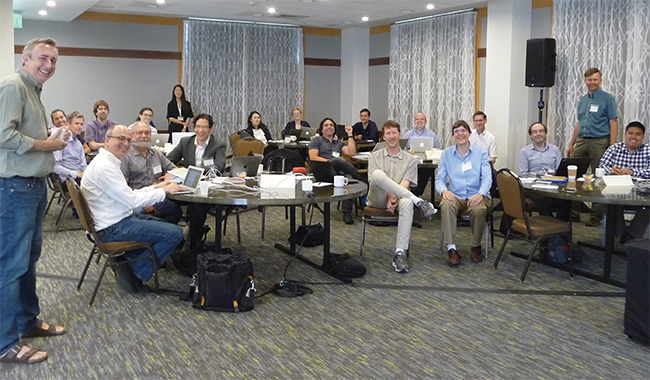MCP: Guidelines for reporting
complex spectra
The editors of the journal Molecular & Cellular Proteomics are seeking feedback from the proteomics community on draft guidelines for publishing proteomics studies that use data-independent acquisition, or DIA, methods. The draft guidelines can be accessed from the journal’s homepage. Comments will be accepted until the end of September.
Steven Carr is deputy editor of MCP and senior director of proteomics at the Broad Institute. “DIA is a rapidly growing research approach that can be employed on a wide variety of instrument platforms,” he said. “As such, it is important to establish rules to make sure it is properly applied.”
DIA is used to collect tandem mass spectrometry data. It offers broad coverage of the proteome with high run-to-run reproducibility.

Mass spectrometers sort the ions from a sample based on their mass-to-charge ratio. In tandem mass spectrometry, there are two ionization and sorting steps. For reliable identification of a molecule, you need to know its intact precursor ion mass and also the masses produced when it is fragmented. Most strategies involve fragmenting a single precursor ion at a time.
Selection of a precursor ion can be based on observation of a peak in the first spectrum (a strategy known as data-dependent acquisition, or DDA), or it can be from a list of predetermined components of interest, i.e., targeted analysis. However, both of these approaches select only a subset of the components present for fragmentation analysis. In DIA, the whole mass range is fragmented over a series of scans. This provides fragmentation information about all components, but fragmenting multiple components at the same time produces complex spectra made of heterogeneous precursors.
With technical advances in instrumentation and computation, DIA approaches are growing in popularity, particularly for quantitative studies of sets of related samples. However, because the spectra collected using DIA are significantly more complex than data from other approaches, they can be more difficult to interpret. Complicating the situation further, there are many competing techniques for collecting DIA data, few of which have been compared directly, and researchers have yet to develop fieldwide standards around how to interpret and report results.
MCP is taking steps to ensure that future data will be described more systematically. The editors brought together 25 DIA experts from academia and industry at a satellite workshop in San Diego after the close of the American Society for Mass Spectrometry’s 2018 meeting in June. The guidelines drafted at this workshop aim to help researchers write a thorough description of how DIA data were collected and interpreted, rendering researchers’ conclusions easier to evaluate.
Among the workshop’s organizers was Robert Chalkley of the University of California, San Francisco, MCP data management editor. “When we publish the draft, we will give the opportunity for anyone in the community to send in their comments and suggestions,” he said.
MCP’s reporting guidelines for other types of mass spectrometry study have been adopted widely by other journals. MCP’s editors hope to continue to lead the field in producing guidelines that aim to allow independent assessment of the reliability of published data sets.
Enjoy reading ASBMB Today?
Become a member to receive the print edition four times a year and the digital edition monthly.
Learn moreGet the latest from ASBMB Today
Enter your email address, and we’ll send you a weekly email with recent articles, interviews and more.
Latest in Science
Science highlights or most popular articles

Mapping fentanyl’s cellular footprint
Using a new imaging method, researchers at State University of New York at Buffalo traced fentanyl’s effects inside brain immune cells, revealing how the drug alters lipid droplets, pointing to new paths for addiction diagnostics.

Designing life’s building blocks with AI
Tanja Kortemme, a professor at the University of California, San Francisco, will discuss her research using computational biology to engineer proteins at the 2026 ASBMB Annual Meeting.

Cholesterol as a novel biomarker for Fragile X syndrome
Researchers in Quebec identified lower levels of a brain cholesterol metabolite, 24-hydroxycholesterol, in patients with fragile X syndrome, a finding that could provide a simple blood-based biomarker for understanding and managing the condition.

How lipid metabolism shapes sperm development
Researchers at Hokkaido University identify the enzyme behind a key lipid in sperm development. The findings reveal how seminolipids shape sperm formation and may inform future diagnostics and treatments for male infertility.

Mass spec method captures proteins in native membranes
Yale scientists developed a mass spec protocol that keeps proteins in their native environment, detects intact protein complexes and tracks drug binding, offering a clearer view of membrane biology.

Laser-assisted cryoEM method preserves protein structure
University of Wisconsin–Madison researchers devised a method that prevents protein compaction during cryoEM prep, restoring natural structure for mass spec studies. The approach could expand high-resolution imaging to more complex protein systems.

